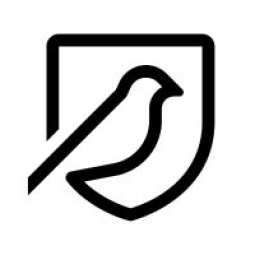Technology Category
- Cybersecurity & Privacy - Identity & Authentication Management
- Platform as a Service (PaaS) - Application Development Platforms
Applicable Industries
- Cement
- Healthcare & Hospitals
Applicable Functions
- Maintenance
Use Cases
- Onsite Human Safety Management
- Personnel Tracking & Monitoring
About The Customer
Winvic is one of the UK’s leading construction contractors with an £800m+ turnover, employing more than 400 staff and additional sub-contractors at various construction sites across the country. Health and safety is a core focus for Winvic, who take a proactive approach to ensuring the safety of all staff and visitors to its sites. The company has been on a long-term journey of growth since its formation in 2001, and as the firm continues to develop, so does the need for ongoing investment in enhanced digital systems.
The Challenge
Winvic, a leading UK construction contractor with an £800m+ turnover and over 400 staff, has always prioritized health and safety. Despite an already outstanding health and safety record, the company is committed to continuous improvement through its 'Doing It Right' behavioural safety initiative. However, as the company continued to grow, it recognized the need for enhanced digital systems to streamline its health and safety reporting and monitoring processes. The existing approach to reporting accidents and recording routine health and safety checks had served the company well, but with a large number of staff and sub-contractors working at various construction sites, a more holistic view of all health and safety activity was needed to maintain and build on its exemplary record.
The Solution
To address this challenge, Winvic introduced a new approach to managing health and safety reporting and monitoring processes using Info Exchange, a cutting-edge online platform. This platform provides staff with full visibility of each site’s health and safety activity. Two applications were set up for Winvic on the Info Exchange platform. The first is an incident reporting app which includes observation reporting. This app is used to record all reported incidents and allows any person connected with the project to report unsafe acts and conditions along with good practice. The second app is focused around health, safety and environmental inspections to record findings of the organization's general inspection process.
Operational Impact
Quantitative Benefit

Case Study missing?
Start adding your own!
Register with your work email and create a new case study profile for your business.
Related Case Studies.

Case Study
System 800xA at Indian Cement Plants
Chettinad Cement recognized that further efficiencies could be achieved in its cement manufacturing process. It looked to investing in comprehensive operational and control technologies to manage and derive productivity and energy efficiency gains from the assets on Line 2, their second plant in India.

Case Study
Hospital Inventory Management
The hospital supply chain team is responsible for ensuring that the right medical supplies are readily available to clinicians when and where needed, and to do so in the most efficient manner possible. However, many of the systems and processes in use at the cancer center for supply chain management were not best suited to support these goals. Barcoding technology, a commonly used method for inventory management of medical supplies, is labor intensive, time consuming, does not provide real-time visibility into inventory levels and can be prone to error. Consequently, the lack of accurate and real-time visibility into inventory levels across multiple supply rooms in multiple hospital facilities creates additional inefficiency in the system causing over-ordering, hoarding, and wasted supplies. Other sources of waste and cost were also identified as candidates for improvement. Existing systems and processes did not provide adequate security for high-cost inventory within the hospital, which was another driver of cost. A lack of visibility into expiration dates for supplies resulted in supplies being wasted due to past expiry dates. Storage of supplies was also a key consideration given the location of the cancer center’s facilities in a dense urban setting, where space is always at a premium. In order to address the challenges outlined above, the hospital sought a solution that would provide real-time inventory information with high levels of accuracy, reduce the level of manual effort required and enable data driven decision making to ensure that the right supplies were readily available to clinicians in the right location at the right time.

Case Study
Gas Pipeline Monitoring System for Hospitals
This system integrator focuses on providing centralized gas pipeline monitoring systems for hospitals. The service they provide makes it possible for hospitals to reduce both maintenance and labor costs. Since hospitals may not have an existing network suitable for this type of system, GPRS communication provides an easy and ready-to-use solution for remote, distributed monitoring systems System Requirements - GPRS communication - Seamless connection with SCADA software - Simple, front-end control capability - Expandable I/O channels - Combine AI, DI, and DO channels

Case Study
Driving Digital Transformations for Vitro Diagnostic Medical Devices
Diagnostic devices play a vital role in helping to improve healthcare delivery. In fact, an estimated 60 percent of the world’s medical decisions are made with support from in vitrodiagnostics (IVD) solutions, such as those provided by Roche Diagnostics, an industry leader. As the demand for medical diagnostic services grows rapidly in hospitals and clinics across China, so does the market for IVD solutions. In addition, the typically high cost of these diagnostic devices means that comprehensive post-sales services are needed. Wanteed to improve three portions of thr IVD:1. Remotely monitor and manage IVD devices as fixed assets.2. Optimizing device availability with predictive maintenance.3. Recommending the best IVD solution for a customer’s needs.

Case Study
HaemoCloud Global Blood Management System
1) Deliver a connected digital product system to protect and increase the differentiated value of Haemonetics blood and plasma solutions. 2) Improve patient outcomes by increasing the efficiency of blood supply flows. 3) Navigate and satisfy a complex web of global regulatory compliance requirements. 4) Reduce costly and labor-intensive maintenance procedures.








